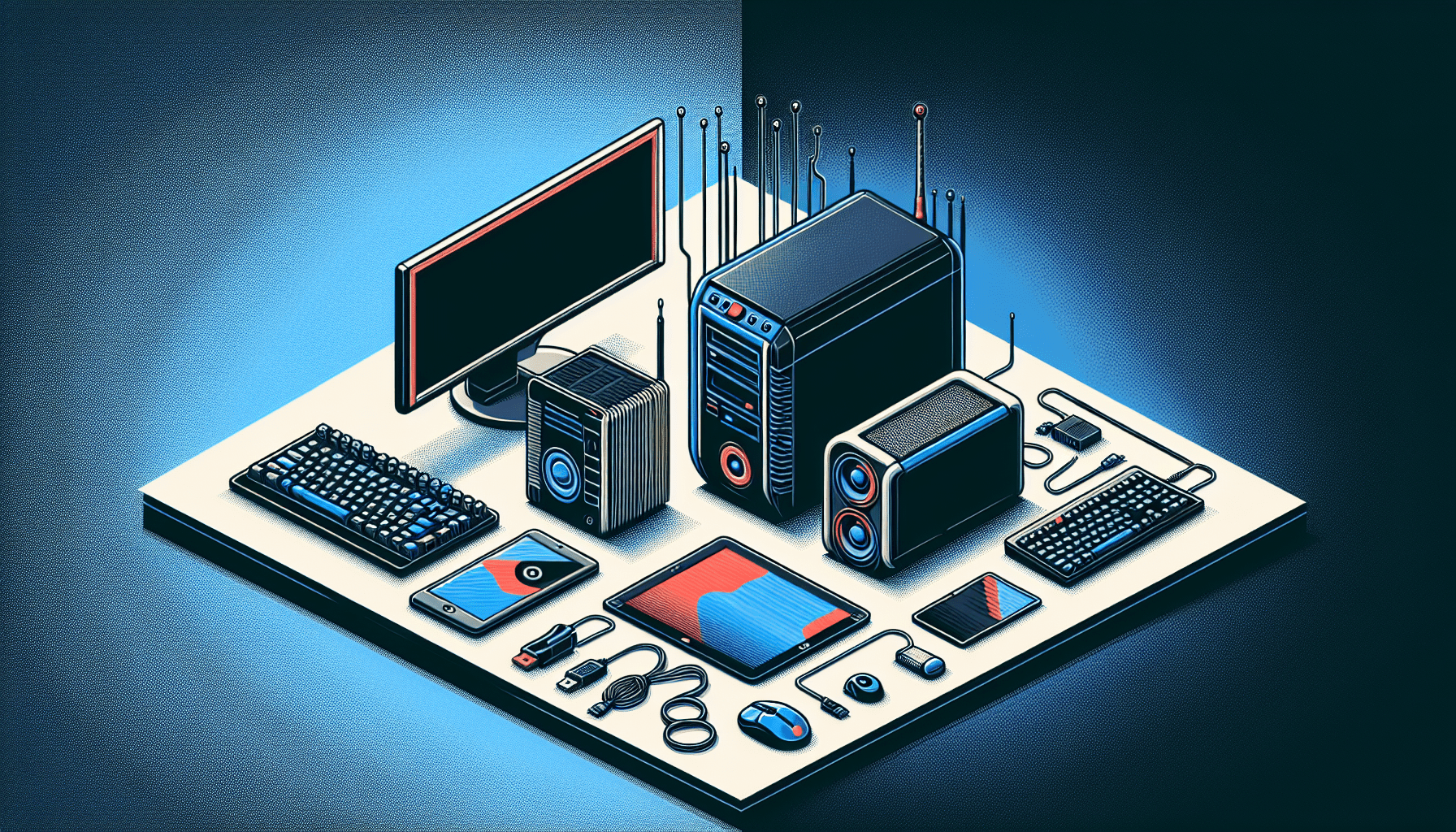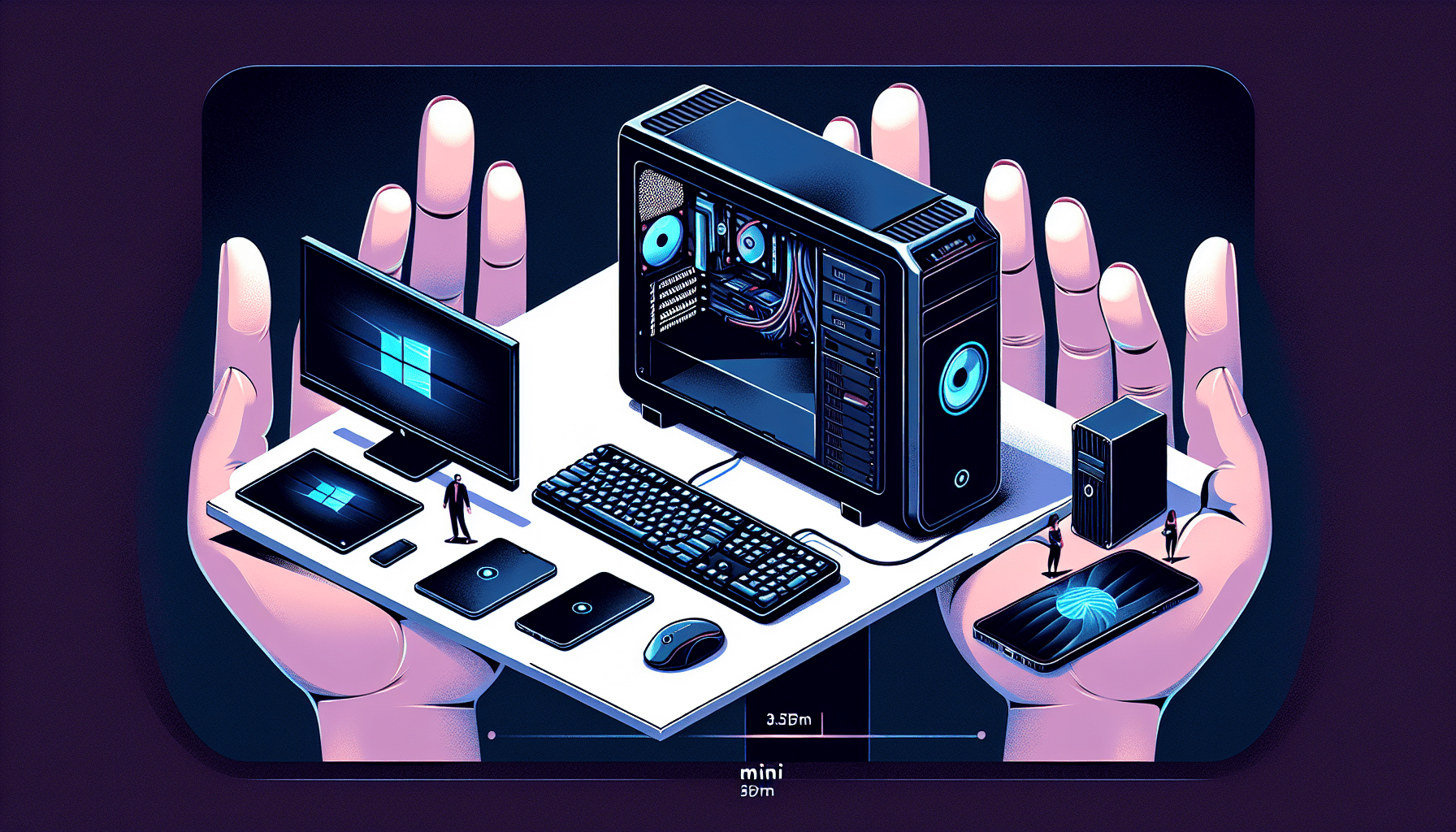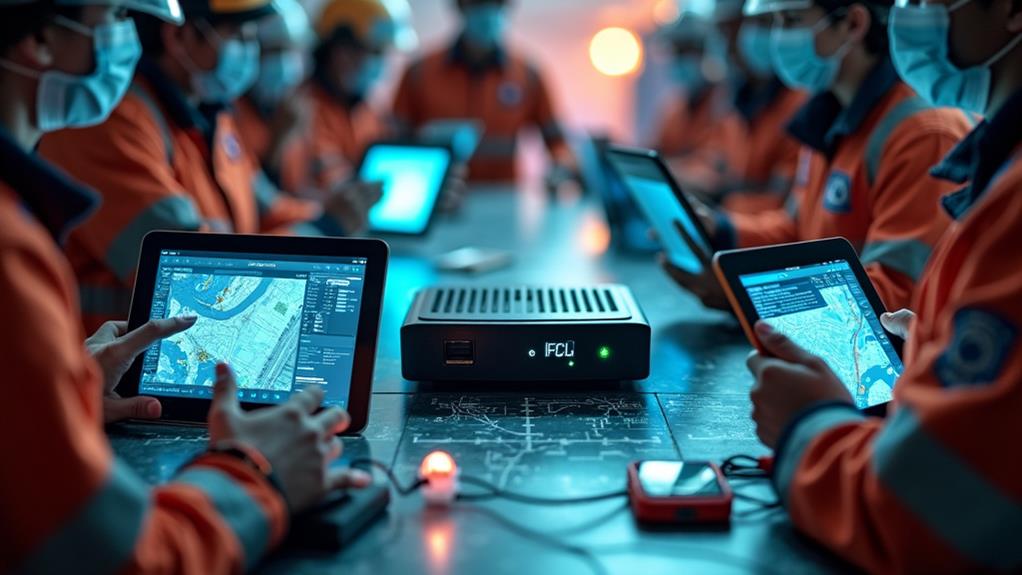



Imagine this scenario: you’re searching for a new computer, and you come across two options – a mini PC and a regular PC. But what exactly sets these two apart? Are mini PCs simply smaller versions of regular PCs? In this article, we will explore the key differences between mini PCs and regular PCs, helping you make an informed decision on which one is the best fit for your needs. So sit back, relax, and let’s unpack the fascinating world of mini PCs versus regular PCs.

Size and Form Factor
Physical Size
When it comes to size and form factor, the main difference between a mini PC and a regular PC lies in their physical dimensions. A mini PC, as the name suggests, is significantly smaller and more compact than a regular PC. It is designed to be lightweight and space-saving, making it a perfect choice for those who have limited desk or office space. Mini PCs are often as small as a book or even smaller, allowing for easy integration into any environment.
Portability
Another advantage of mini PCs is their portability. Due to their compact size, they are highly portable and easy to carry around. Whether you need to take your work on-the-go or want to set up a temporary workstation in different locations, a mini PC offers the flexibility and convenience you need. Unlike regular PCs, which are typically bulky and heavy, mini PCs can fit comfortably in a backpack or briefcase, making them an excellent choice for frequent travelers or digital nomads.
Performance
Processing Power
When it comes to processing power, regular PCs generally have an edge over mini PCs. Regular PCs usually come with more powerful processors, which allow for faster and more efficient multitasking capabilities. They are better suited for resource-intensive tasks such as video editing, 3D rendering, or running complex software programs. Mini PCs, on the other hand, are often equipped with lower-powered processors, focusing on delivering a balance between performance and power efficiency.
Graphics Capability
Regular PCs also tend to have superior graphics capability compared to mini PCs. This is particularly important for those who engage in graphic-intensive activities such as gaming or video editing. Regular PCs often offer dedicated graphics cards, which provide a smoother and more immersive graphical experience. While some mini PCs do have integrated graphics solutions, they are usually not as powerful as those found in regular PCs. However, for everyday tasks like web browsing, document editing, or media streaming, the graphics capability of a mini PC is more than sufficient.
Expandability and Connectivity
Number of Ports
When it comes to expandability and connectivity options, regular PCs usually have the upper hand. Regular PCs generally offer a wider range of ports, including multiple USB ports, audio jacks, card readers, and more. This allows for easy connection to a variety of devices, such as external hard drives, printers, cameras, and peripherals. In contrast, mini PCs, due to their smaller size, may have limited port availability. However, many mini PCs still come with a sufficient number of ports for everyday needs, such as USB, HDMI, and headphone jacks.
Upgradability
Regular PCs typically offer better upgradability options compared to mini PCs. With regular PCs, you have the freedom to upgrade various components such as the processor, graphics card, RAM, and storage. This allows for future-proofing and the ability to adapt to evolving technological requirements. Mini PCs, on the other hand, often come with integrated components that are not easily replaceable or upgradeable. While some mini PCs may have limited upgradability options, it is still essential to check the specifications and compatibility before making any upgrades.
Power Consumption
Energy Efficiency
Mini PCs are well-known for their energy efficiency. Compared to regular PCs, they consume significantly less power, resulting in lower energy bills and reduced environmental impact. Mini PCs are designed to optimize power usage, utilizing low-power components and energy-saving features. This eco-friendly approach makes them an ideal choice for those who prioritize sustainability and want to minimize their carbon footprint. On the other hand, regular PCs consume more power due to their higher-performance components, which translates into higher energy costs in the long run.

Cost
Initial Cost
When it comes to the initial cost, mini PCs tend to be more budget-friendly compared to regular PCs. Mini PCs often come at a lower price point, making them an attractive option for those on a tight budget. While they may not have the same level of performance or expandability as regular PCs, they offer a cost-effective solution for everyday computing tasks, such as web browsing, email, and document editing. Regular PCs, on the other hand, can vary significantly in price depending on the specifications and brand, with higher-end models commanding a higher price tag.
Maintenance Cost
In terms of maintenance cost, mini PCs again have an advantage. Due to their compact and integrated design, mini PCs typically require less maintenance compared to regular PCs. They have fewer components that can malfunction or require replacement, resulting in lower repair or upgrade costs. Regular PCs, on the other hand, may require more frequent maintenance and potential repairs or upgrades, which can add to the overall cost over time. It is essential to consider both the initial cost and long-term maintenance cost when deciding between a mini PC and a regular PC.
Operating System Compatibility
Supported OS
Both mini PCs and regular PCs are compatible with a wide range of operating systems. They can support popular operating systems like Windows, macOS, and Linux. It is crucial to ensure that the mini PC or regular PC you choose is compatible with your preferred operating system, as some models may have limitations or restrictions. It is also worth noting that while most regular PCs offer support for multiple operating systems, some mini PCs may have specific OS requirements or limitations, so it is essential to check the specifications before making a purchase.
Software Compatibility
In terms of software compatibility, both mini PCs and regular PCs can run a vast majority of software applications available in the market. Whether you need to use productivity tools, creative software, or entertainment applications, you can generally expect compatibility with both types of PCs. However, for more resource-intensive software or specialized applications, regular PCs may offer better performance and compatibility due to their higher processing power and expandability options. It is important to consider your specific software requirements when choosing between a mini PC and a regular PC.
Intended Use
Home Entertainment
If you primarily use your PC for home entertainment purposes, both mini PCs and regular PCs can fulfill your needs. Mini PCs, with their compact size and energy-efficient design, are excellent choices for media streaming, web browsing, and casual gaming. They can easily be connected to a TV or monitor and provide a seamless multimedia experience. Regular PCs, on the other hand, offer more flexibility and power for demanding tasks such as high-resolution video playback, gaming, or immersive virtual reality experiences. Consider your specific home entertainment needs and the level of performance you require when deciding between a mini PC and a regular PC.
Gaming
For gaming enthusiasts, regular PCs are generally the preferred choice. Their powerful processors, dedicated graphics cards, and expandability options make them ideal for running the latest games with high graphical fidelity and smooth gameplay. Regular PCs can handle resource-intensive titles and provide an immersive gaming experience that mini PCs may struggle to match. While some mini PCs may offer decent gaming performance for less demanding or older games, they are not typically designed to handle the latest AAA titles or support virtual reality gaming experiences. If gaming is a top priority for you, a regular PC is the way to go.
Productivity
When it comes to productivity tasks such as document editing, web browsing, or video conferencing, both mini PCs and regular PCs are suitable choices. Mini PCs, with their compact size and energy efficiency, can provide a clutter-free and power-efficient workspace for everyday productivity needs. Regular PCs, on the other hand, may offer better multitasking capabilities, faster processing speeds, and a more extensive range of connectivity options for enhanced productivity. Consider the specific productivity tasks you need to perform and prioritize factors such as processing power, connectivity, and overall performance when selecting between a mini PC and a regular PC.
Noise and Heat
Fanless Design
One of the advantages of mini PCs is their fanless design. Unlike regular PCs, which often rely on fans for cooling, mini PCs are designed to operate silently without any fan noise. This makes them an excellent choice for those who require a quiet working environment or want to avoid distractions. The absence of a fan also means there are no moving parts that can fail or require maintenance, resulting in a more reliable and durable system.
Thermal Performance
Regular PCs, due to their larger size and more powerful components, can generate more heat compared to mini PCs. This increased heat output often requires more robust cooling systems, such as fans or liquid cooling solutions, to maintain optimal thermal performance. Mini PCs, on the other hand, generate less heat and can often rely on passive cooling methods, such as heat sinks or heat pipes, to dissipate heat efficiently. While regular PCs may offer better thermal performance for sustained heavy workloads or gaming sessions, mini PCs typically provide sufficient cooling for everyday tasks and normal usage.
User Experience
Ease of Use
Both mini PCs and regular PCs offer a user-friendly experience, but mini PCs often excel in terms of ease of use. Mini PCs are typically designed to be plug-and-play, requiring minimal setup and configuration. They often come pre-installed with the necessary software and drivers, making them ready to use right out of the box. Regular PCs, while still relatively easy to set up, may require additional steps for software installation and driver updates. However, regular PCs offer more customization options and flexibility for advanced users who prefer to fine-tune their system settings or install specific software.
Ergonomics
Ergonomics play a crucial role in ensuring a comfortable and healthy computing experience. While both mini PCs and regular PCs can be set up in ergonomic configurations, mini PCs often offer more flexibility in terms of placement and positioning. Their compact size allows for easy integration into existing setups, such as mounting behind a monitor or attaching to the back of a TV. This helps reduce clutter and promotes a more organized workspace. Regular PCs, due to their larger size, may require dedicated desktop space or additional peripherals such as keyboard trays or monitor mounts to achieve an ergonomic setup.
Availability
Market Availability
Both mini PCs and regular PCs are widely available in the market, offering a range of options to suit different needs and budgets. Mini PCs have gained popularity in recent years, and various manufacturers offer a diverse range of models catering to different use cases. Regular PCs, being the traditional and established form factor, are available from numerous brands and come in various configurations and price points. It is important to research and compare the available options to find the best fit for your specific requirements.
Brands and Models
When it comes to brands and models, both mini PCs and regular PCs have a wide range of options to choose from. Well-known computer manufacturers such as Dell, HP, Lenovo, and Asus offer both mini PCs and regular PCs, ensuring high-quality products and reliable support. Additionally, there are niche manufacturers and custom PC builders that specialize in mini PCs or regular PCs, providing unique customization options and tailored solutions. Researching and considering factors such as brand reputation, customer reviews, and warranty coverage can help ensure a positive buying experience.
In conclusion, the difference between a mini PC and a regular PC lies in their size, performance, connectivity options, power consumption, cost, and intended use. Mini PCs are compact, portable, and energy-efficient, making them suitable for everyday use and home entertainment purposes. Regular PCs offer superior processing power, graphics capability, and expandability, making them ideal for resource-intensive tasks, gaming, and productivity. The choice between a mini PC and a regular PC depends on your specific requirements, budget, and preferences. Consider factors such as space constraints, performance needs, compatibility, and budget to make an informed decision on which type of PC suits you best.
Disclosure: As an Amazon Associate, I earn from qualifying purchases.





